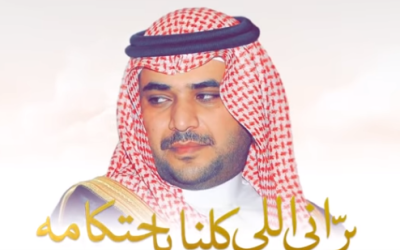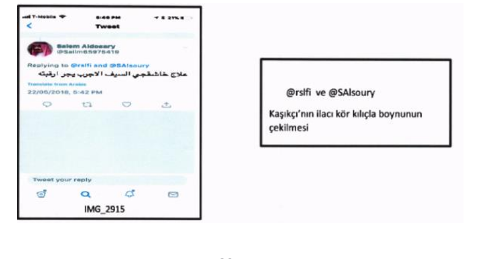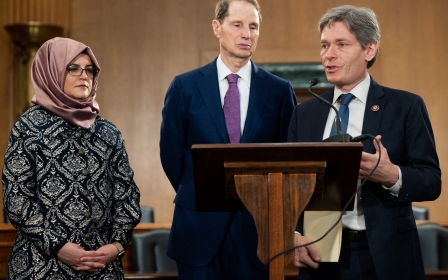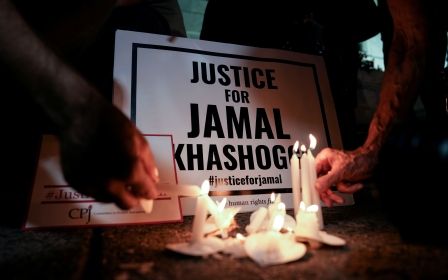Turkish Khashoggi indictment sheds new light on Saudi cover-up
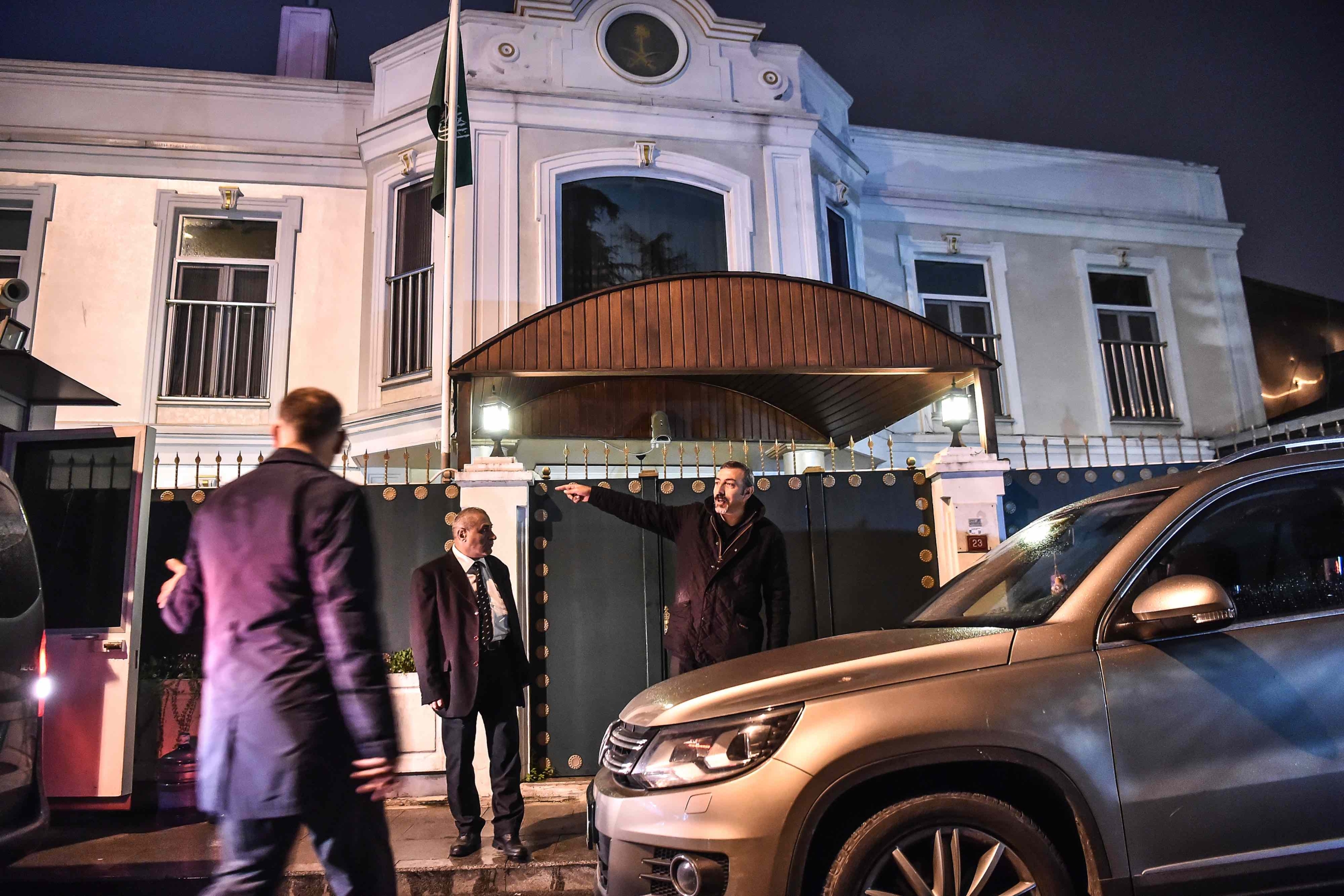
A Turkish indictment filed by the Istanbul prosecutor's office last month on the killing of Jamal Khashoggi indicates that investigators focused on a well and an oven located at the Saudi consul-general’s residence in the search for the slain journalist's body, but couldn't resolve the mystery behind its disappearance.
The indictment, obtained by Middle East Eye, quotes a local technician working for the Saudi consulate, who said that he saw two members of the hit squad sent to kill Khashoggi at the garden of the consul-general's residence following the murder on 2 October 2018.
The worker said that he had been told a group of engineers had come to renovate the residence on the day of the murder, and he had been asked to help them.
When he arrived in the residence's garden, he saw several people running around. Some were coming out of a hut, while others were leaving the kitchen.
'The marble around the oven was cleaned either by nitric acid or bleach, because its colour was different'
- Local technician
“These people told me to fire the oven. I realised that they had tried to fire it but it didn’t work because the ventilation was blocked,” he said. “Then they asked me to carry some wood to the oven and one of them helped me to carry a couple of pieces of wood.”
New MEE newsletter: Jerusalem Dispatch
Sign up to get the latest insights and analysis on Israel-Palestine, alongside Turkey Unpacked and other MEE newsletters
The technician also said that everyone in the area was in a hurry, and he was asked to quickly leave the garden.
“The marble around the oven was cleaned either by nitric acid or bleach, because its colour was different,” he said.
The worker told police that one member of the hit team, thought to be either Saad H Alzahrani or Saad al-Bostani, helped him to carry wood. One of the individuals he saw leaving the hut was either Mustafa Mohammed al-Madani or Naif Hassan al-Arifi.
Another witness working for a local restaurant said that one hour before the murder took place two people who spoke both Arabic and Turkish purchased raw meat from their store.
Disposing of the body
The details correspond to a picture of the hit squad's movements and behaviour that has been sketched out by previous reports and investigations.
The Saudi operatives, who travelled from the kingdom to Istanbul to intercept Khashoggi as he sought documentation necessary to remarry, attempted to cover their tracks through deep cleaning.
When Turkish investigators were eventually allowed into the consulate building in which Khashoggi had been killed and dismembered, surfaces had been scrubbed clean and fresh paint was seen on the walls.
Following Khashoggi's murder, the operatives are known to have convened in the consul-general's residence close by. The journalist's remains have never been found, but sources with knowledge of the investigation have previously told MEE that the oven in the residence may have been used to help dispose of body parts.
A police report seen by MEE in February 2019 said that the oven could reach temperatures of up to 1,000 degrees Celsius, which is “enough to burn all DNA evidence without a trace”.
Another key location in the consul-general's residence was a well beneath the house. Investigators asked permission from Saudi authorities to search it on 17 October 2018, according to the indictment. They were only allowed to take water samples.
One Turkish source told MEE last year that water samples weren't sufficient, as the assassination team could have put Khashoggi's remains in sealed bags and placed them in the well.
Another detail revealed in the indictment is that the police struggled to access the contents of the iPhones and iPads belonging to Khashoggi and that Apple, the company that makes the devices, didn’t respond to requests for help.
The suspects
The indictment against 20 suspects thought to be involved in Khashoggi's assassination accused former deputy head of Saudi Arabia's general intelligence, Ahmed al-Asiri, and former royal court adviser Saud al-Qahtani of having "instigated premeditated murder with monstrous intent".
The Turkish indictment also accuses 18 others of murdering Khashoggi, a US resident and columnist for Middle East Eye and the Washington Post.
Among those listed are Maher Abdulaziz Mutreb, a former diplomat and intelligence officer who has repeatedly been pictured with Saudi Crown Prince Mohammed bin Salman; Salah Mohammed Tubaigy, formerly head of the Saudi Scientific Council of Forensics; and Fahad al-Balawi, a member of the Saudi royal guard.
Earlier this month, Istanbul's 11th Criminal Court accepted the 117-page indictment and officials launched the trial process for the suspects, who are to be tried in absentia.
Saudi Arabia has concluded separate investigations and trials into the murder, which were condemned by UN experts and human rights organisations for both their opacity and for clearing top suspects Asiri and Qahtani.
Saudi authorities did, however, allow a Turkish representative to attend the court hearings, who is cited in the indictment as saying all those put on trial in the kingdom insisted that they were forced by the police to provide certain statements and were mere public employees who followed the orders of their superiors.
The suspects insisted that there was a local collaborator who disposed of the body, yet they couldn’t name the individual. Turkish investigators believe the body was destroyed by the suspects themselves.
The indictment listed some of the images collected from Khashoggi’s laptop, which included several screenshots of Twitter users insulting Khashoggi and threatening him with death.
In addition, it detailed the tensions between Khashoggi, a prominent critic of the government, and the Saudi royal family, especially Mohammed bin Salman.
Khashoggi’s friends, including former Egyptian presidential candidate Ayman Nour, told investigators that the journalist had been continuously pressured by Qahtani, who called him a “dog” and ended his columns in Saudi-owned newspaper Al Hayat in 2016.
Soon after Khashoggi was banned from working in the kingdom by Qahtani, he left for Virginia, in the United States. However, according to Nour, the government invited him to return via text messages from his former boss Prince Al-Waleed bin Talal.
Khashoggi also told Nour that on Mohammed bin Salman's sudden promotion to crown prince, several princes signed a letter to King Salman calling on him to remove his newly powerful son.
The journalist reportedly said all the princes and officials who signed the letter were later arrested, including Al-Waleed bin Talal, because the crown prince believed that they were preparing a coup against him.
In December, a Saudi court sentenced five people to death and three to jail over Khashoggi's murder.
The CIA concluded that Mohammed bin Salman almost certainly signed off on the killing - a finding backed by every single US senator in late 2018.
This article is available in French on Middle East Eye French edition.
Middle East Eye delivers independent and unrivalled coverage and analysis of the Middle East, North Africa and beyond. To learn more about republishing this content and the associated fees, please fill out this form. More about MEE can be found here.


